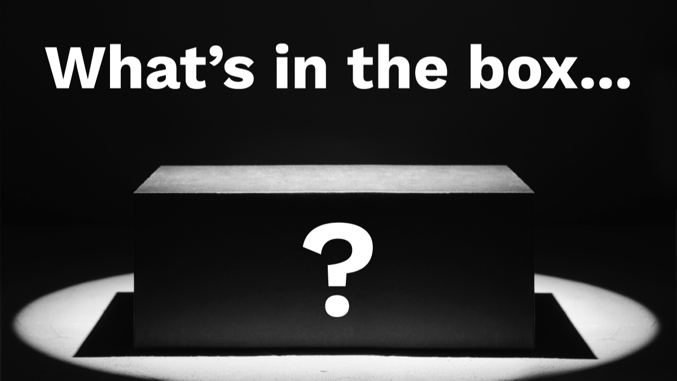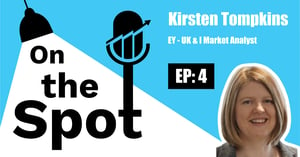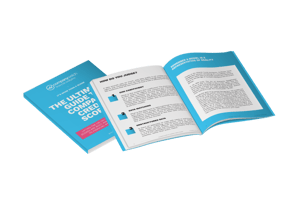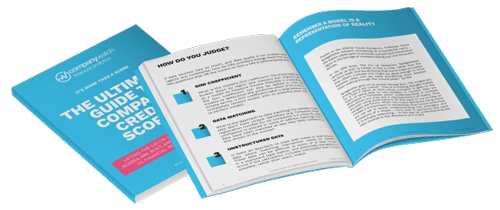Black box credit scores are not enough to analyse risk

With war in Europe and a cost of living crisis at home, 2023 is a scary time to be doing business. When the world is this uncertain, you need to be extra vigilant about spotting weaknesses in the companies you work with. It’s not enough to look at how a business has performed in the past. You have to anticipate how they would react to future shocks.
This is too much to ask of a traditional credit score. Credit reference agencies are increasingly reliant on machine learning, leading to credit scores whose origins are unclear. Basing big decisions on a single credit score is always risky, but this is especially true if you don’t know how the score was calculated. This is where we can help.
Our Forecast View™ feature lets you build a forecast for company performance. You can simulate a range of economic disruptions, or enter your own data for tailor-made results. These results are completely transparent, so you always know how our credit scores are calculated.
Here’s a closer look at the limitations of a basic business credit score, and how Forecast View™ can help you to overcome them.
Listen to our latest On the Spot podcast here:
How are simple credit scores calculated?
Credit scores traditionally take what is known as a scorecard approach. This means that a company is judged against a number of criteria, each chosen as an indicator of financial health. Common criteria include a company’s age, management structure and annual income.
Each of these data points is given a different weighting, and the results are combined to calculate the overall business credit score, and provide a credit analysis. This is usually based on how likely the company would be to pay a supplier within a 30-60 day period.
While these credit scores are basic, they do at least give you a rough idea of the factors involved in their creation. However, as financial analytics become more sophisticated, even this basic level of insight is no longer guaranteed.
Find out how company credit scores are calculated. Read our ultimate guide here:
What is a black box credit score?
Machine learning algorithms have made it easier than ever to calculate credit scores and generate a credit analysis. Computers can process millions of data points and generate complex risk predictions in a matter of seconds. Over 70% of UK financial service providers already use this technology, and the average company expects to triple its machine learning capabilities in the next three years.
There are huge benefits to this technology, but there’s also a danger of complacency. When credit reference agencies neglect the human element of credit scoring and let the machines take the reins, they can end up with little or no idea of how their scores have been calculated. These arcane results are known as “black box scores”, and they present a serious risk for companies.
Basing decisions on a black box credit score puts you in a vulnerable position. Since you don’t know the factors that influenced the credit score, you don’t know if they reflect your own priorities for risk management.
Depending on your business, you may be more or less vulnerable to certain types of risk. If these have been underweighted, a black box score could give you a false sense of security and provide an inaccurate credit analysis. If they’ve been exaggerated, you might end up avoiding a company that actually poses little danger.
Shining a light on the credit scoring process
We understand that a company’s risk profile isn’t the same for every potential partner. You don’t just need to know how stable a business is in general. You need to know how much risk it poses to you specifically. A black box score can’t help here, but our in-depth company credit checks and credit analysis can.
Every Company Watch customer gains access to Forecast View™. This is a state-of-the-art risk prediction tool, offering a level of insight far beyond that of a standard credit score.
Using our intuitive dashboard, you can choose from a range of pre-set scenarios. These include everything from a sudden spike in interest rates to the loss of a key supplier. In each case, you can see exactly how these events would affect the financial health of a company. You can combine as many of these scenarios as you want, allowing you to simulate complex economic pressures with ease.
The dashboard also features a number of adjustable sliders, each representing a different financial pressure. You can adjust these in any way you choose, allowing you to zero in on specific areas of risk and examine all possible permutations.
Follow Company Watch on LinkedIn
A credit score you can count on
Forecast View™ goes much deeper than a simple credit score, but we recognise that simple scores have their uses. Summing up risk as a single number makes it easier to compare companies, and to explain your decisions to stakeholders. That’s why we created the H-Score®.
The H-Score® is our answer to a traditional credit score. While credit scores are based on the performance of one company, the H-Score® is based on the performance of thousands. Our algorithm compares a company’s finances to those of similar companies that have failed in the past. The more similarities we find, the greater the chance of failure. This likelihood is expressed on a scale of 1-100, with a score of 25 or less considered high-risk.
Every time you run a simulation in Forecast View™, the company’s H-Score® is adjusted automatically. Unlike a black box credit score, this number is accompanied by a detailed explanation. As well as examining how various financial shocks would affect a company, you can see why this would happen and how it could be avoided.
Risk management should always be transparent and explainable, not hidden inside a black box. Forecast View™ lifts the lid on credit scores and credit analysis so that you can make smarter decisions. Get in touch via the button below to arrange your free trial today.
Disclaimer- The past performance of a company is not always an indicator of future success. Read our terms and conditions here.



